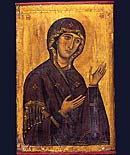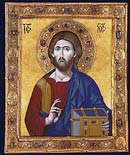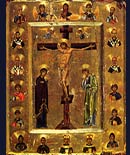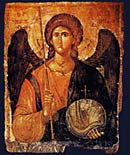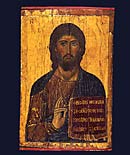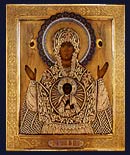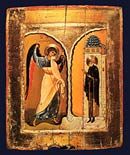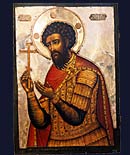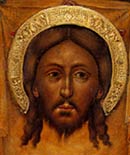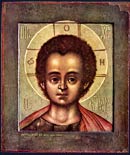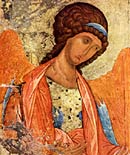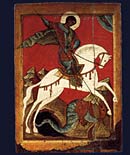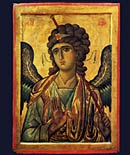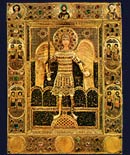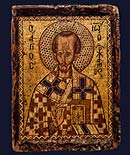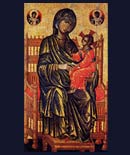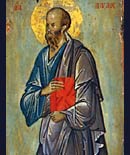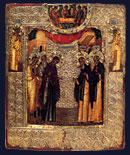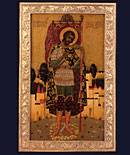Gallery - Ikon of the Archangel Michael
13 x 9.5 in 32.8 x 24.5 cm
Egg Tempera on Wood
Late 13th Century
Museo Nationale di San Matteo, Pisa
The Archangel Michael is the commander in chief of the angelic host and in this role he is the ultimate vanquisher of evil. Here we see Michael carrying a medallion of Christ in his hand. The angel also holds a scale on which we see a human soul in the balance. The demon attempts to pull the scale down but Michael uses his wand or spear to stop him.
This ikon is brilliantly painted in shades of blue, red and purple. Michael's wings and the collar and border of his tunic are highlighted in gold.
The ikon is painted in early Paleologian style. The heavy modelling of the figure, flashing highlights and classical proportions of the ikon place it around the end of the 13th century, soon after the reconquest of of Constantinople by the Emperor Mihael Paleologus in 1261.
Although it has recently been speculated that this ikon was painted by a Greek artist working in Italy, it is just as likely it was painted in Constantinople and brought to Pisa by a merchant who did business in Byzantium.
Egg Tempera on Wood
Late 13th Century
Museo Nationale di San Matteo, Pisa
The Archangel Michael is the commander in chief of the angelic host and in this role he is the ultimate vanquisher of evil. Here we see Michael carrying a medallion of Christ in his hand. The angel also holds a scale on which we see a human soul in the balance. The demon attempts to pull the scale down but Michael uses his wand or spear to stop him.
This ikon is brilliantly painted in shades of blue, red and purple. Michael's wings and the collar and border of his tunic are highlighted in gold.
The ikon is painted in early Paleologian style. The heavy modelling of the figure, flashing highlights and classical proportions of the ikon place it around the end of the 13th century, soon after the reconquest of of Constantinople by the Emperor Mihael Paleologus in 1261.
Although it has recently been speculated that this ikon was painted by a Greek artist working in Italy, it is just as likely it was painted in Constantinople and brought to Pisa by a merchant who did business in Byzantium.
< last: Ikon of the Archangel Michael next: Ikon of the Annunciation >

